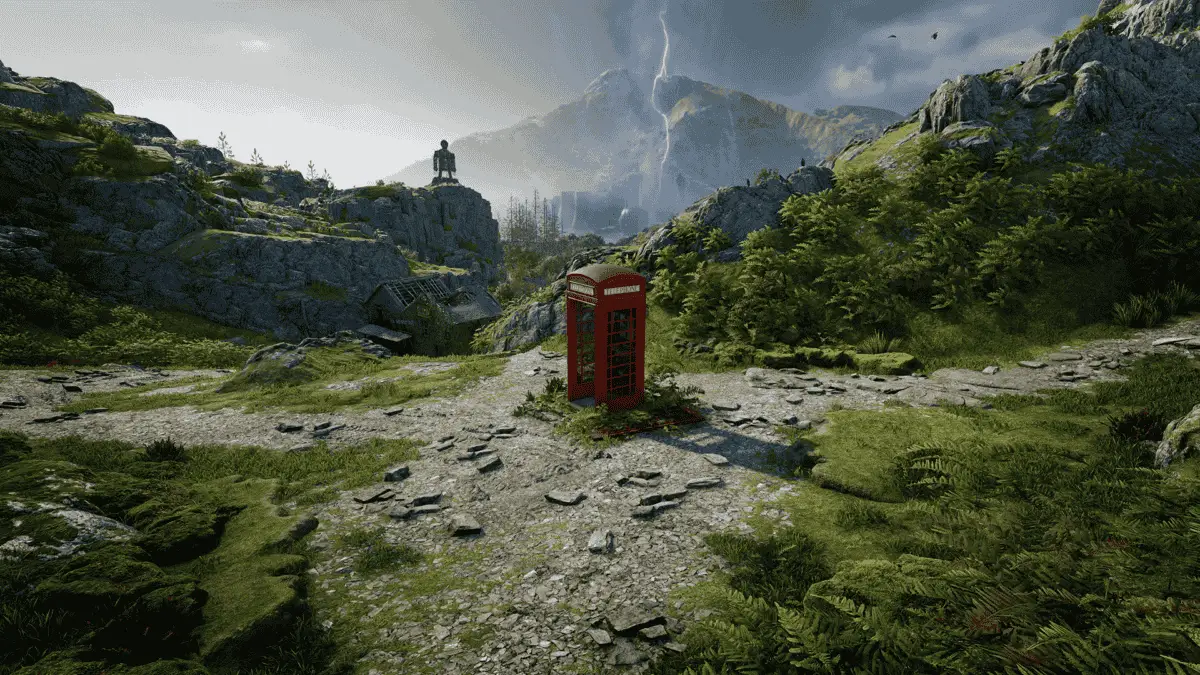When stepping out of the quarantine zone bunker and into the verdant landscapes of England’s Lake District at the start of Atomfall, the initial comparison that came to mind wasn’t the Fallout series as one might expect—it was Elden Ring. That’s because, although Atomfall operates on a smaller scale, it embraces a similar design philosophy: thrusting the player into an unfamiliar world with little direction, sparse guidance, and only fragmented clues to determine who they are or where they should go. The result is a freeform narrative structure that rewards curiosity and personal exploration, encouraging players to carve their own journey through its rich, often threatening environments. This open-ended format remained thoroughly engaging and filled with surprises across the 15-hour experience, even if the path was occasionally obstructed by combat that could be as erratic as it was British in flavor.
Setting the Stage: A Fictional Crisis Born from Reality
The narrative draws heavily from the real-life Windscale nuclear accident of 1957, placing the events of Atomfall five years after the catastrophe. The game’s setting—a carefully designed fictional quarantine zone encompassing the damaged reactor and surrounding countryside—is deeply atmospheric. Isolated from the rest of the world, the inhabitants have fractured into clashing factions. Players are often caught between the agendas of these groups, navigating moral ambiguity as they decide whom to assist and whom to deceive. The game’s flexible quest structure evokes the spirit of Fallout: New Vegas more than the rigid dichotomies of Fallout 4.
Tension is heightened by sporadic calls received through red telephone boxes scattered across the map. An anonymous voice frequently urges the player to trust no one, echoing the cryptic paranoia of Agent Mulder’s directives.
A Web of Secrets and Side Stories
In addition to the central mystery surrounding the Windscale incident, Atomfall offers a multitude of subplots and side investigations that emerge organically through dialogue and discovered documents. Early diversions included looking into the death of a vicar’s aide or exploring the locked upper floor of the town’s bakery. Whether resolved through conversation or violence, these quests grow increasingly complex and morally layered as the game progresses.
One of Atomfall’s standout features is how it guides players without the use of constant waypoint markers. Rather than relying on an on-screen compass to point the way, the game subtly nudges players forward through environmental cues. This might include deciphering vague location descriptions, measuring map coordinates, or noticing smoke curling from a distant chimney. The absence of map clutter allows for deeper immersion, encouraging a meticulous examination of the surroundings. While the game includes optional settings for a more guided experience, these are disabled by default—though a single obscure quest did prompt a brief switch to a more directed mode.
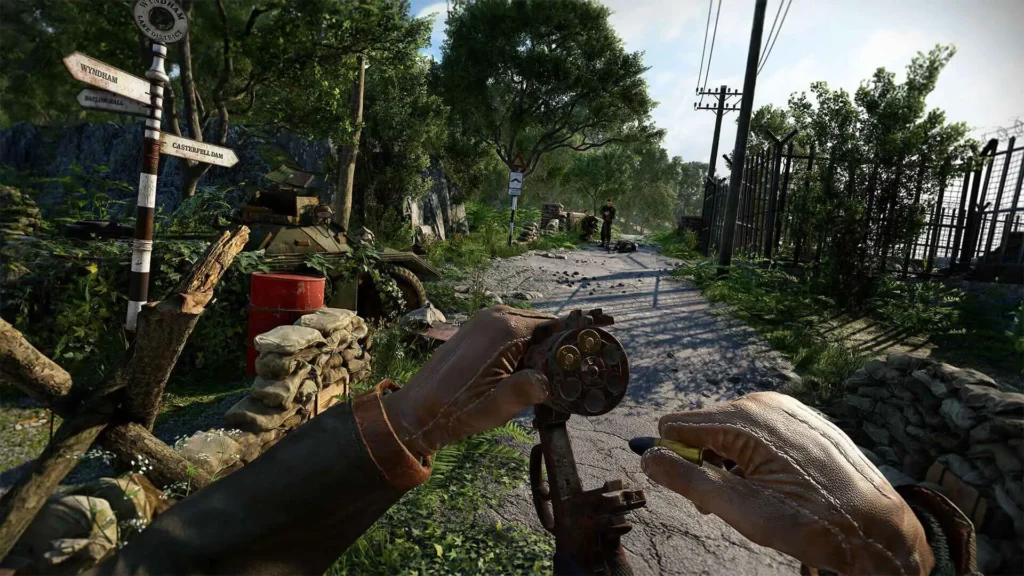
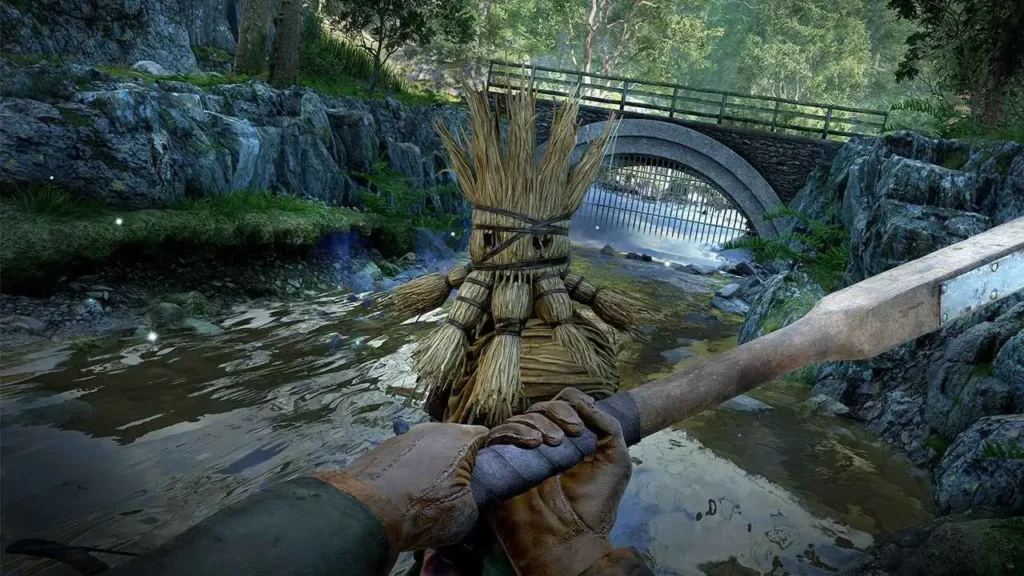
An Authentic Slice of British Life… in Ruins
Few survival-action games embrace their national identity quite like Atomfall. It’s a uniquely British experience, from characters that resemble beloved TV icons to gameplay mechanics that incorporate pint glasses, Cornish pasties, and warm cups of tea. Although the game arrives in the wake of the highly anticipated Fallout: London mod, it still manages to carve its own niche. The environments—a richly imagined snapshot of Northern England—feel simultaneously foreign and familiar.
The setting is further brought to life through references to classic British sci-fi and folk horror. Some are overt, such as Triffid-like monstrous flora and towering effigies reminiscent of The Wicker Man. Others are more elusive, including fleeting glimpses of what looked like a certain blue police box from British television, which seemed to shift its location when approached.
Interestingly, one of the least British aspects of Atomfall is the weather. The game features no dynamic weather system or day/night cycle, bathing its world in near-constant sunlight. This consistent brightness creates a striking contrast with the pitch-black interiors of caves and bunkers.
Into the Depths: Combat and Survival
Combat mainly occurs within underground locations and against a wide range of enemies, including ruthless raiders, deranged druids, grotesque mutants, and deadly automated sentries. Players quickly learn that brute force is rarely the best approach. The protagonist isn’t a hardened soldier but rather a regular person unaccustomed to post-disaster violence. This is reflected in the sluggish melee attacks, clunky firearm reloads, and stamina system that impacts aim and movement. It all adds up to a protagonist who feels more like a rickety shopping cart than a precision killer.
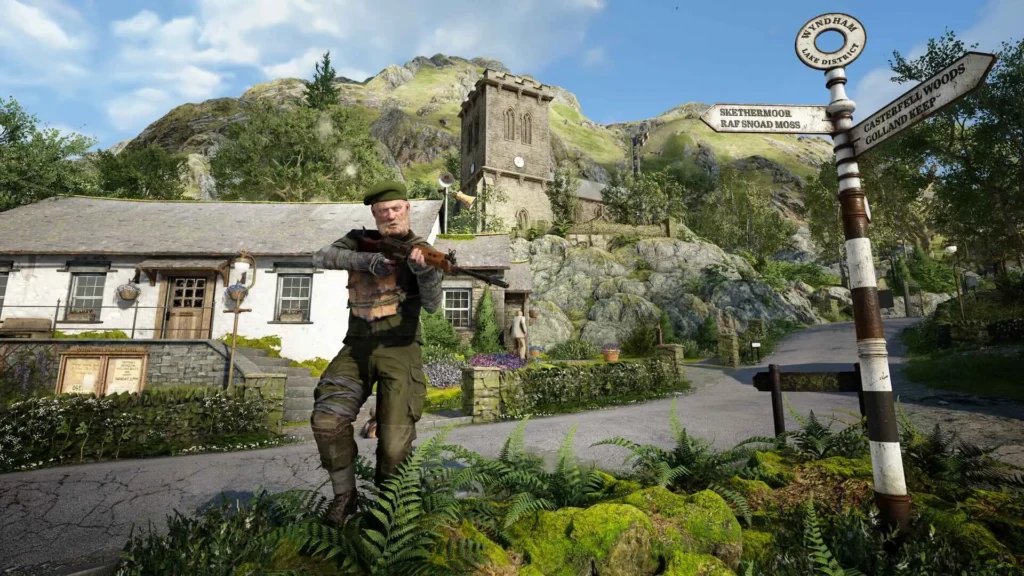
Success in combat requires forethought and adaptability. On the Survivor difficulty, players face a steep but rewarding learning curve. Eventually, stealth becomes a practical and effective strategy—especially once the player obtains a bow. Its quietness prevents drawing attention, and arrows can often be recovered, making it a dependable weapon in contrast to the scarce and precious ammunition used by firearms.
While satisfying in many ways, the stealth system has its limitations. Basic mechanics like sneaking and silent takedowns are present, but opportunities for distraction or escape are limited. Despite an abundance of throwable items such as whisky bottles, there’s no apparent ability to use them as noise-making tools. Likewise, smoke bombs, if they exist at all, remain hidden deep within the game’s labyrinth of secrets.
A Mixed Bag of Battles
When stealth fails, and open combat ensues, the experience can vary wildly. Some scenarios feel brutally unfair—such as being ambushed during scripted animations or attacked through solid objects. Other encounters verge on slapstick comedy, as enemies mindlessly follow the player into ambushes. These inconsistencies echo some of the quirks found in the Fallout series, for better or worse.
Nevertheless, the enemy AI isn’t always aggressive. When enemies are away from their home turf, they often resort to insults rather than violence—sometimes advising the player to leave with a colorful British insult. This design choice complements the game’s reliance on foot travel, preventing constant interruptions and ensuring that exploration remains manageable. That said, the absence of a fast travel option does become tiresome in the game’s later chapters. Sewer routes and secret tunnels help alleviate this somewhat, but a more efficient travel system would have been welcome.
Progression and Playstyle
Atomfall features a concise but effective skill tree with four core categories: ranged, melee, survival, and conditioning. Each branch contains nine perks. Players can tailor their approach depending on their preference, whether focusing on stealth, brute strength, or endurance. Compared to sprawling skill trees in other modern titles, Atomfall’s focused setup feels refreshingly straightforward, especially within a campaign that wraps up in roughly 15 hours.
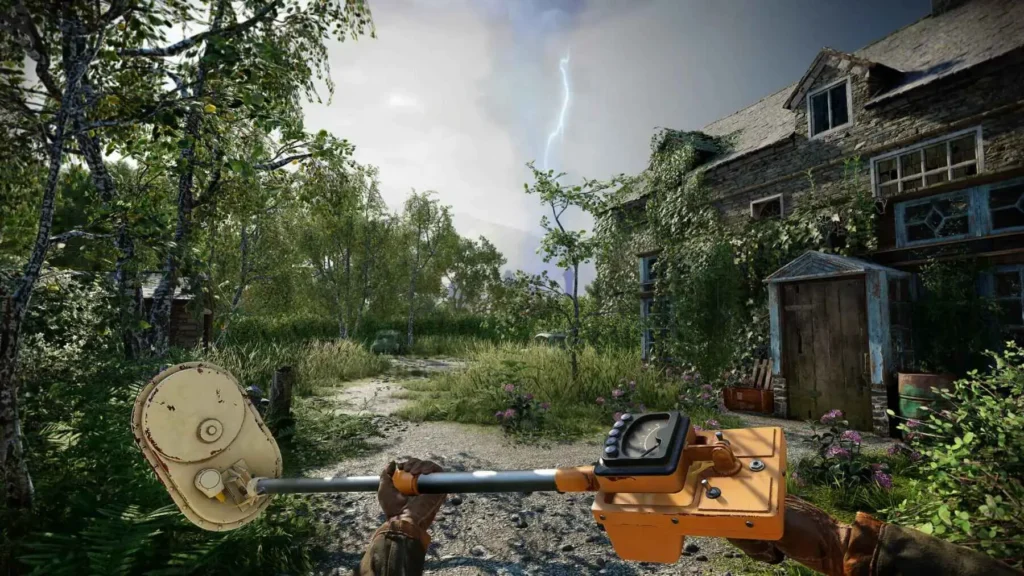
The crafting system mirrors this simplicity. Items are built using universal materials gathered throughout the environment, from metal scraps to fluids and glass shards. Crafting can be done on the go, allowing players to create essentials like bandages and bombs or upgrade weapons without searching for a specific crafting bench.
A Fitting Conclusion
The most rewarding creation in Atomfall, however, is the journey itself. The narrative builds to a climactic decision point, forcing players to choose between competing factions they’ve supported throughout the game. The ending reached had a satisfying payoff for the protagonist, though it came at great cost to others. Based on the branching paths and hinted consequences, there appear to be at least five possible outcomes—enough incentive to revisit the game and explore unexplored corners, such as a suspiciously glowing medical facility that begs further investigation.
Atomfall is a captivating survival-action game that blends elements from Elden Ring and Fallout into a distinctive and compelling package. Its richly detailed vision of post-disaster Britain is populated by eccentric characters, mysterious locations, and unnerving folklore. While its combat can occasionally stumble and its systems show signs of uneven polish, the game’s emphasis on discovery, choice, and atmosphere makes it a deeply engaging experience. Whether through exploration, investigation, or sheer improvisation, Atomfall rewards those willing to chart their own course through its haunting and unforgettable world.
